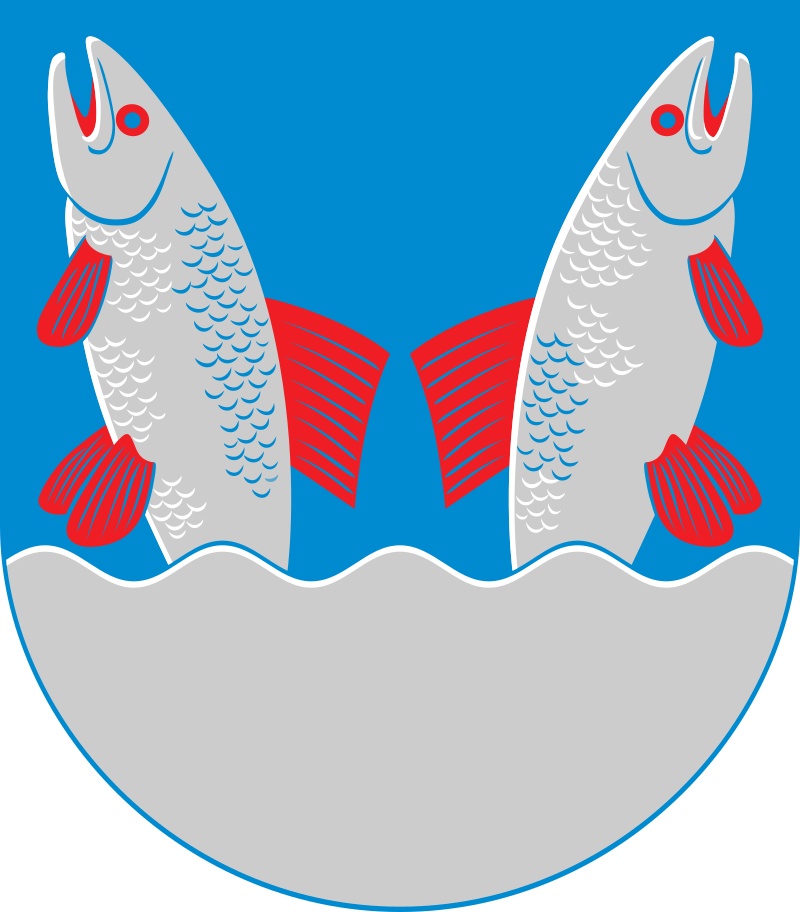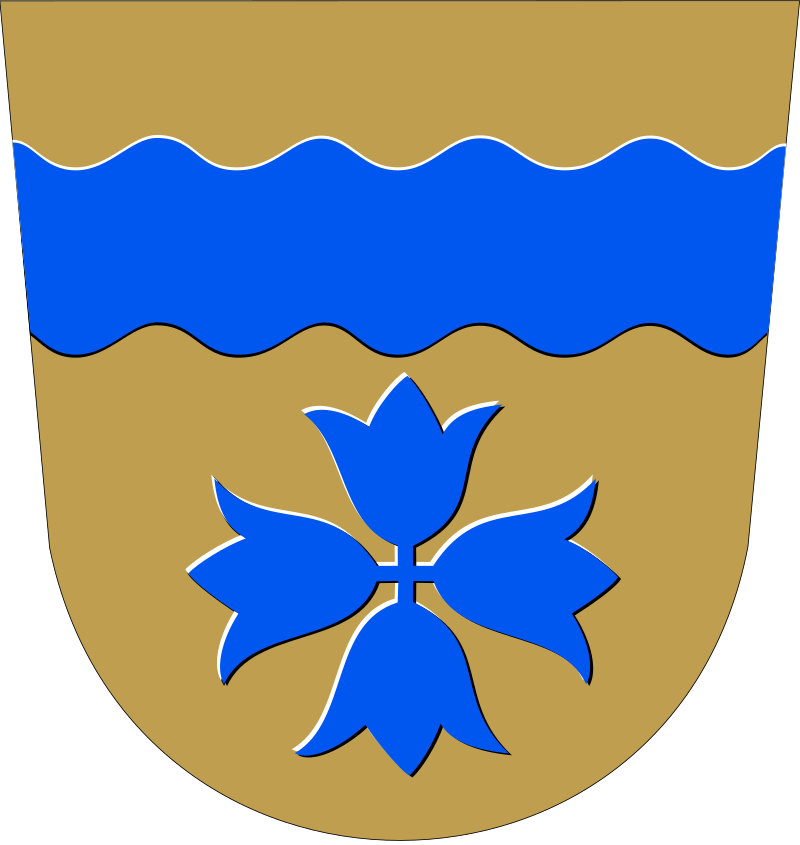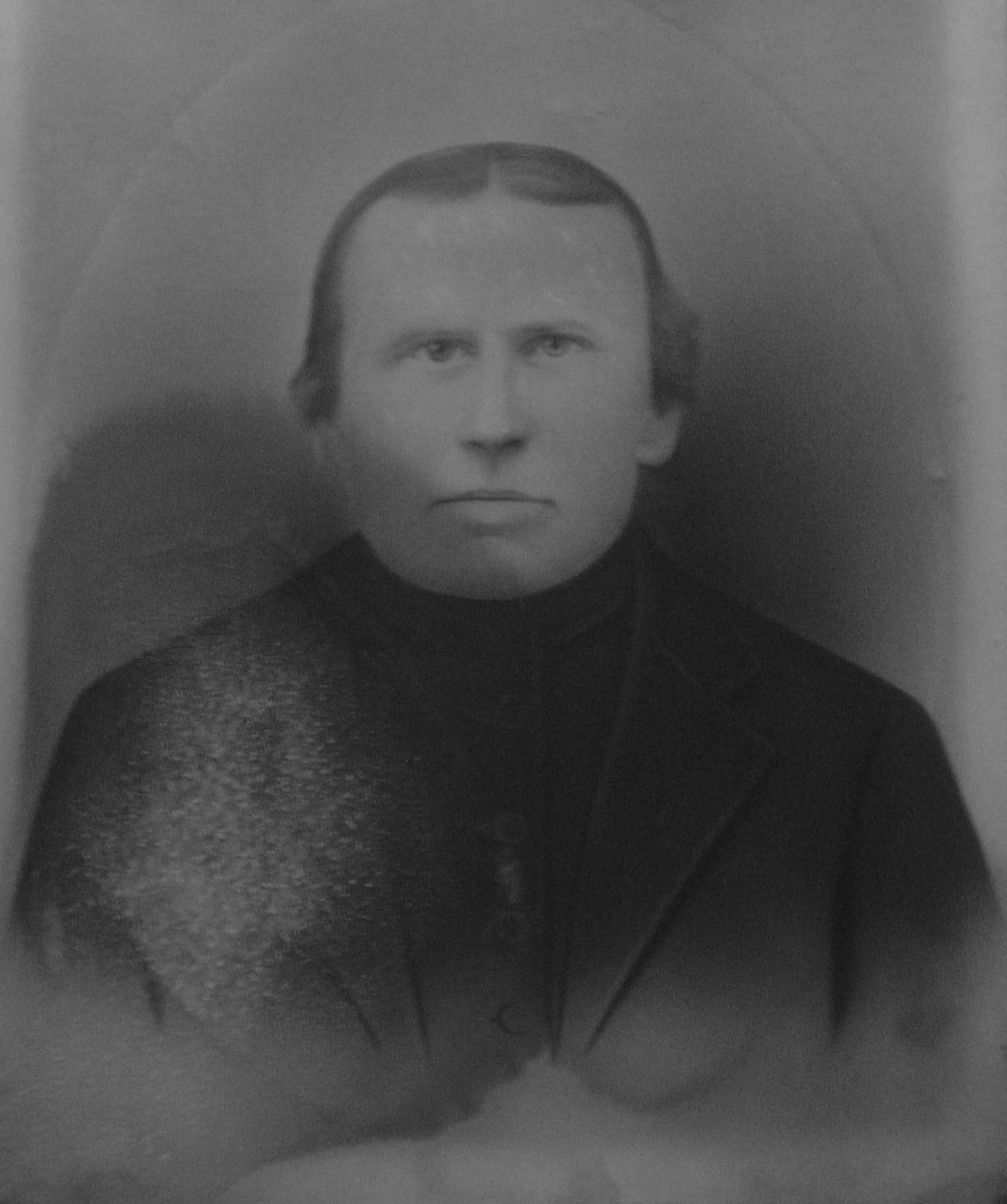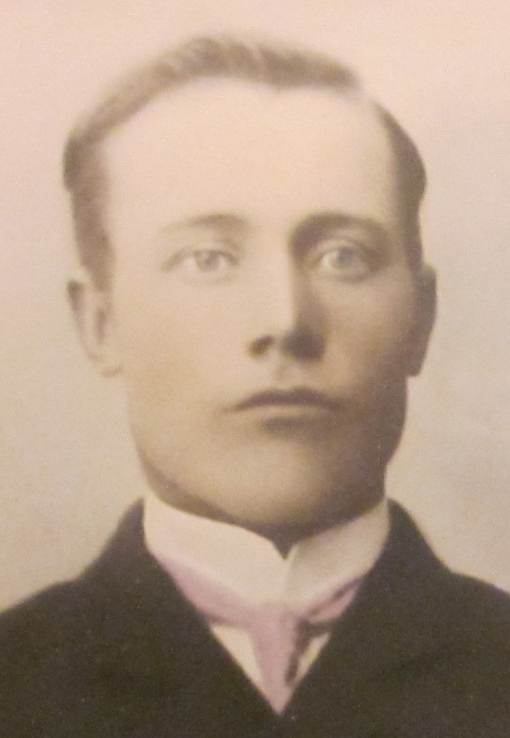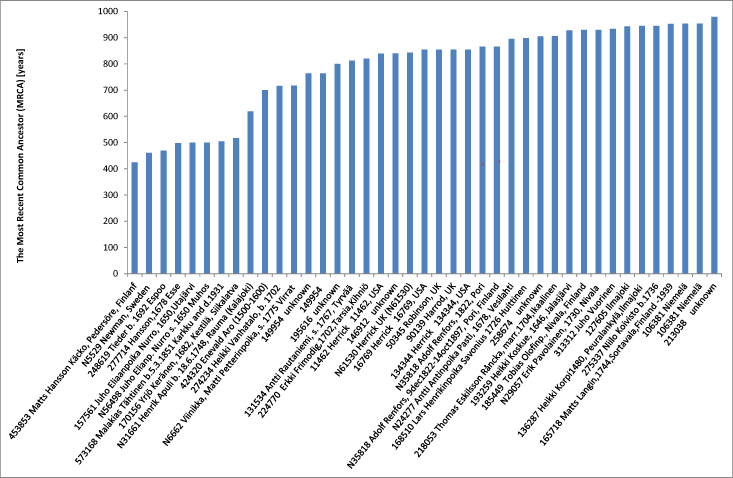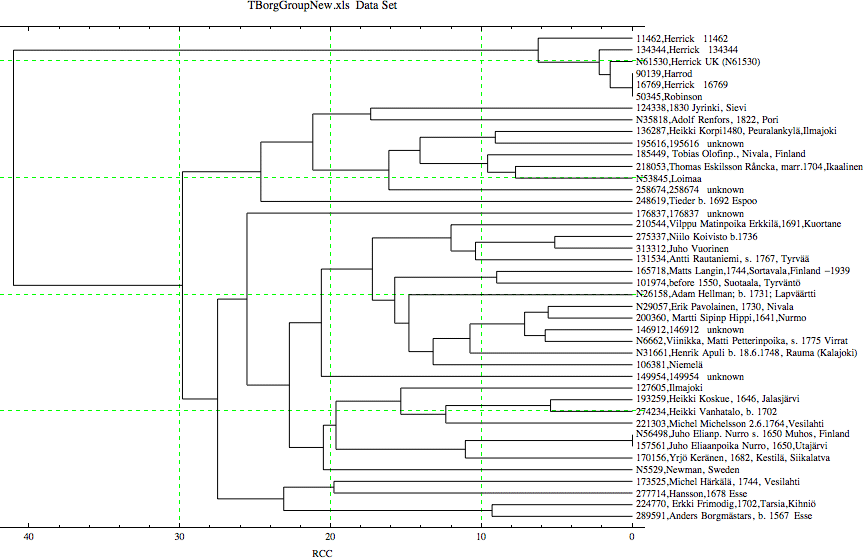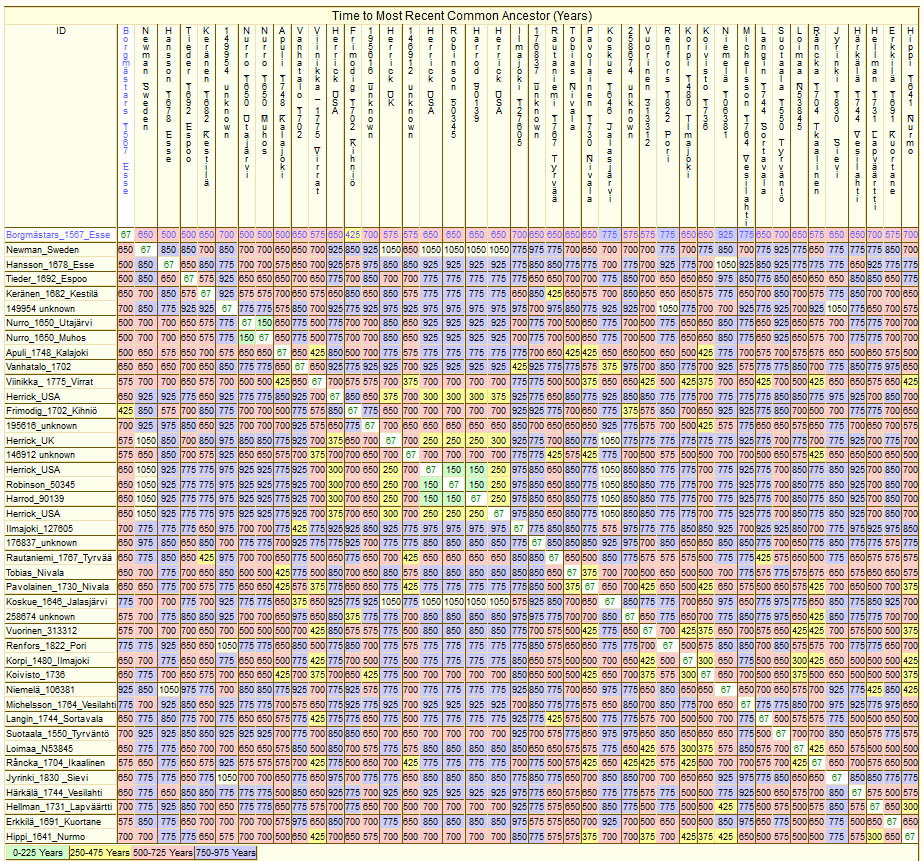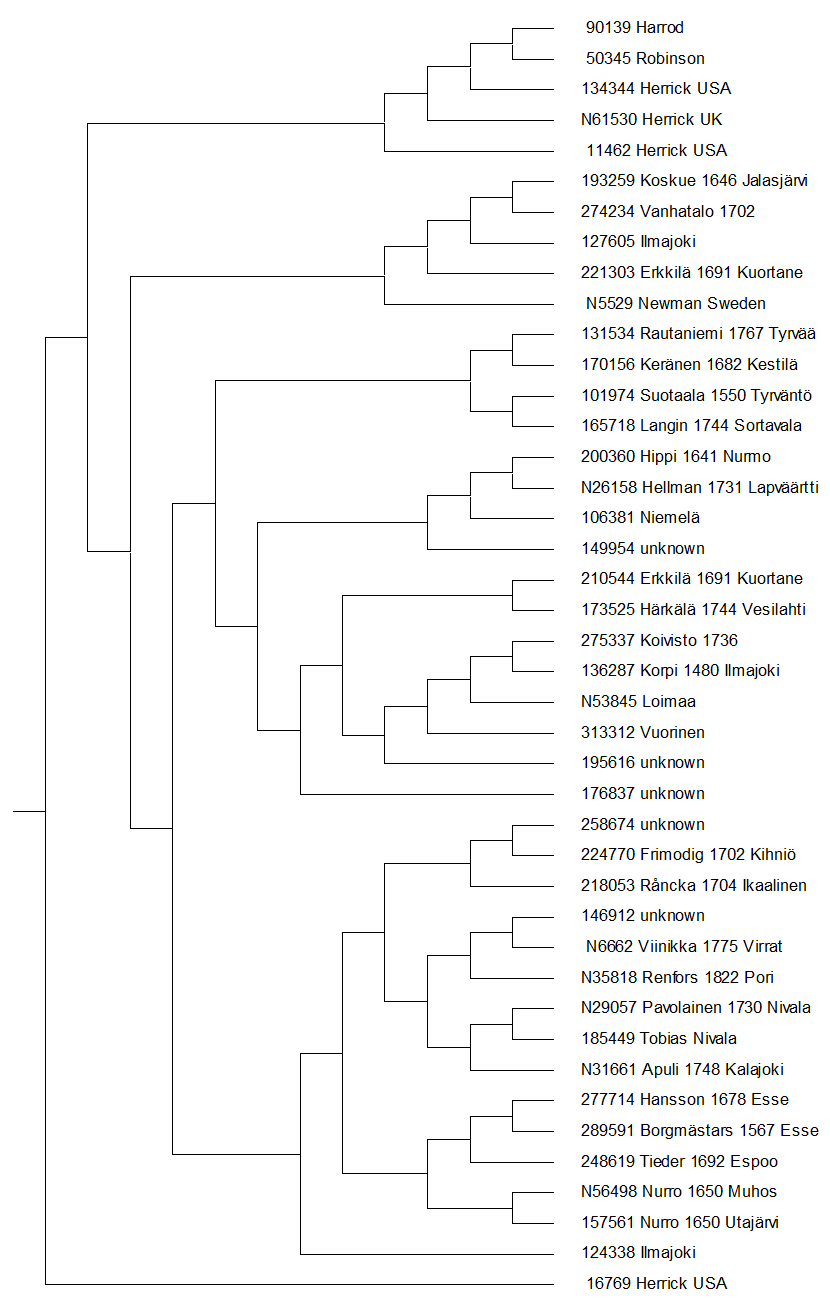|
Esi-isien etsimistä eri keinoin – Trying to find ancestors by different meansYhteisiä esi-isiä tietokoneohjelmien avulla ja muilla tavoin - The Most Recent Common Ancestor (TMRCA) by software packages and different principles.
Taustaa - Background
Alustavasti lähintä yhteistä esi-isää (TMRCA) – Apparaisal of The Most Recent Common Ancestor (TMRCA) Fylogeneettinen puu - The Phylogenetic Tree Klassinen Fylogeneettinen puu - The Phylogenetic Tree by the Classical Method Taustaa - BackgroundIhmisten sukulaissuhteiden selvittämisessä Y-DNA avulla ollaan vielä alussa. En käsittele toistaiseksi mitokondrio-DNA:ta (mtDNA) äidiltä tyttärelle haploryhmiä. Ensimmäinen kaupallinen Y-DNA:n testausfirma FTDNA aloitti vuonna 2000 ja ala sekä periaatteet ovat kovassa kehityksessä ja vielä vakiintumattomia. Sinänsä DNA:ta on jo selvitelty jo vuosikymmeniä, mutta ihmisten sukulaissuhteiden selvittämisessä taaksepäin muutaman tuhannen vuoden verran ollaan vielä alussa. Oheisessa englanninkielisessä tekstissä näytetään jo 500 erilaista ohjelmistopakettia ja varsinkin suku- eli fylogeneettisten puiden rakentamiseen on tullut yli 300 ohjelmistopakettia. –Tämä jo osittaa, että ei ole vielä varmaa oikeaa suuntaa analyyseille.Sukututkimuksen apuna käytettyjen DNA testien, kuten tällä sivulla STR (Short Tandem Repeat) ja SNP (Single-Nucleotide Polymorphism) eli "snipsien" menetelmiä. Analyysien taustoja selvitellään Big Y-DNA Borg suku sivulla. Tässä yritetään seurata kehitystä eri tavoin ja rakentaa karttoja sekä puita eri periaattein esi-isien selvittämiseksi. Lue DNA-juttujen taustaa täältä, kun tästä eteenpäin käsitellään varsinaista asiaa. There are alternatives to building phylograms. Geneticists build trees all the time. In the link page are listed abt. 400 phylogeny packages and 50 free web servers. The presence of many alternatives indicate that there is not yet a wider accepted method, but maybe one of those would become later a standard. This branch of science is not easy to follow and to get into. In any case, we are here only trying to collect and show different methods and results to get our major and the final goal: finding The Most Recent Common Ancestor, roots, origin and older family relations. Alustavasti lähintä yhteistä esi-isää (TMRCA) – Apparaisal of The Most Recent Common Ancestor (TMRCA)Tein oman pikkuisen ohjelman ja periaatteen, jotta pystysin jotenkin hallitsemaan tuhansia nimiä ja Y-DNA tuloksia. Käytin oheiseen taulukon tekoon markkereiden mutaationopeuksia, jotta saisin vähän paremman tuloksen vain suoraa askelmäärän eroon verrattuna. Ohessa näytetty nimien ja tietueiden määrä on tarkoituksella pieni selventääkseen asiaa.
Laskennassa on käytetty kunkin markkerin keskimääräistä mutaatioaikaa ja saatu integraalitulos muutettu takaisin vuosiksi Excel taulukossa. Menetelmä ja tulokset kehittyvät ja tarkentuvat. Laskennassa oletetaan, että sukupolvi olisi 25 vuotta, kun se on varmaan 33 vuotta. Suodatin tulokset niin, että näytän vain alle 1000 vuotta sukulaissuhteessa olevat tietueetja niitä on n. 40 tietuetta. Alussa on sotilaita ja kylän naapureitä (Esse), sitten Botnia ryhmäläisiä Satakunnasta ja Lounais-Suomesta Vesijärven ympäristöstä. Kuviossa aivan nuorin yhteinen esi-isä on laskennallisesti n. 400v päässä. Y-DNA:n läheisyys täytyy olla aivan tilastollista sattumaa tai mutaation palautumisen tuomaa vääristymää (back mutation). At first names are mainly soldiers and village neighbors (Esse), then I1 Bothnia group on western part of Finland and over 1000 year old ones generally from Finland and Scandinavia. All markers has their average mutation rates, but singe cases can vary a lot. Also possible back mutation can occur giving closer apparent relation as the situation is originally (as it would be in reality?). Finally I showed only TMRCA results under 1000 years. The order and number may vary later on, but this type of a smaller database file is easier to handle and understand the matter. You find several Herrick names from USA and originally from Great Britain, background is found on the In the chart many ancestors are coming from the former river route discussed above. The problem with Finnish soldiers under the rule of Swedish kings (1200-1800) was the fact that they had very difficult family names for Swedish officers and got new easy to pronounce names in Swedish army. The soldiers could also have been recruited from Sweden, Norway, Denmark, Finland or paid mercenary from Germany, Scotland etc. After 10-20 year service they had a right to settle down and got farm area somewhere in Scandinavia. Fylogeneettinen puu - The Phylogenetic Tree
1William E. Howard III, The Use of Correlation Techniques for the Analysis of Pairs of Y-STR Haplotypes,
Part 1: Rationale, Methodology and Genealogy Time Scale, Journal of Genetic Genealogy, 5(2):256-270, 2009. Klassinen Fylogeneettinen puu - The Phylogenetic Tree by the Classical MethodOhessa aivan vaan vertailuksi fylogeneettinen puu klassisisia menetelmiä ja ohjelmistoja käyttäen. Datana oli lähes samat mutta päivitetyt Y-DNA fiedostot, kuin ylempänä. Ohjelmistoina käytin tuoretta PHYLIP pakettia, joita on tehty jo vuodesta 1980 lähtien. Lopullisen puun teossa käytettiin MEGA ohjelmistoa.
The tree chart result of the classical method looks like some close fresh genetic steps is described rather well, but something strange is found in many deeper and older branches. The user has a lot of impact for the final results by selecting different settings to the programs. It is very understandable that many new software packages are still under development for better Y-DNA analyses.
16.2.2017 |

